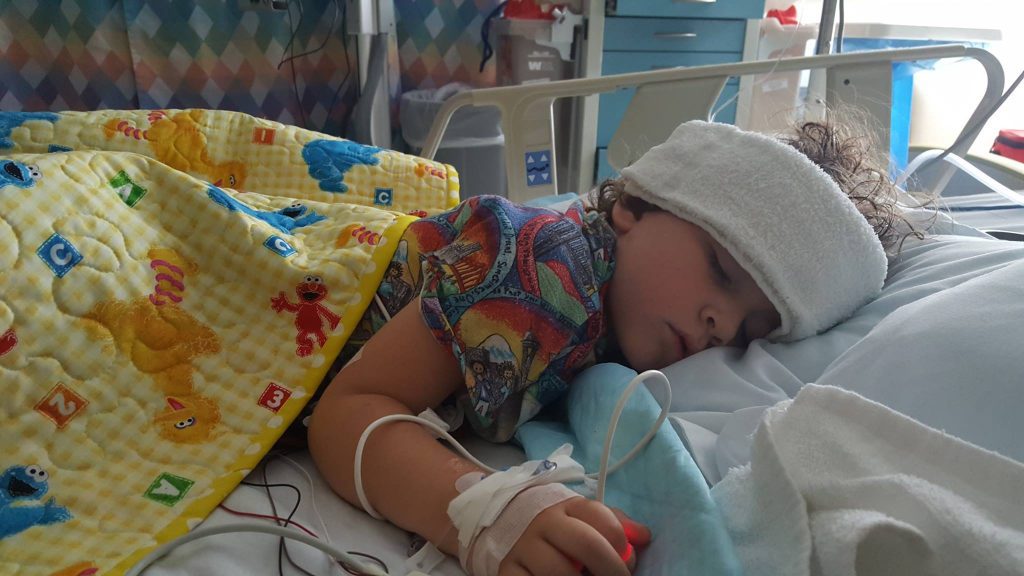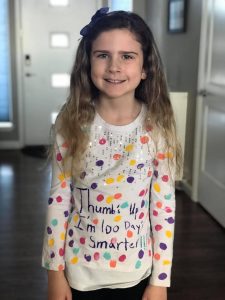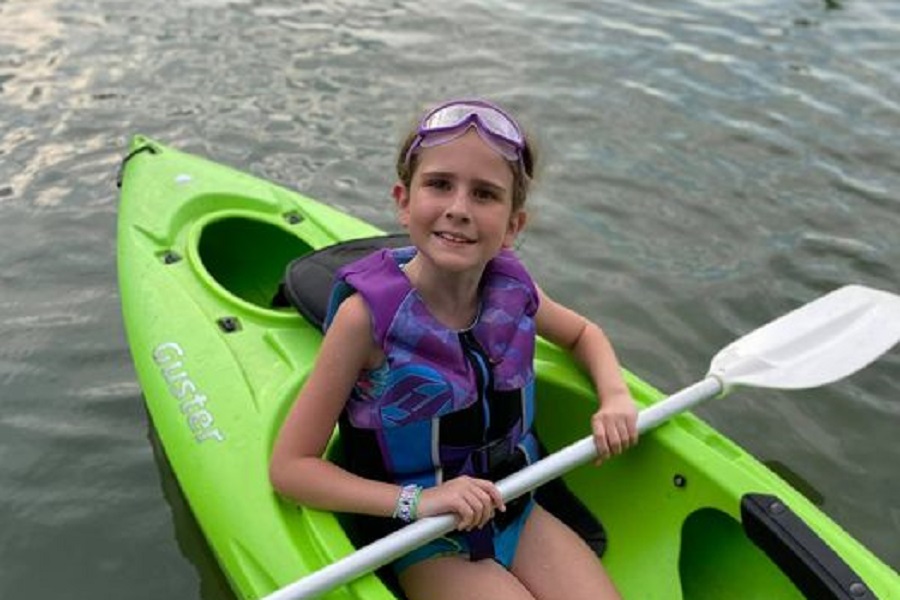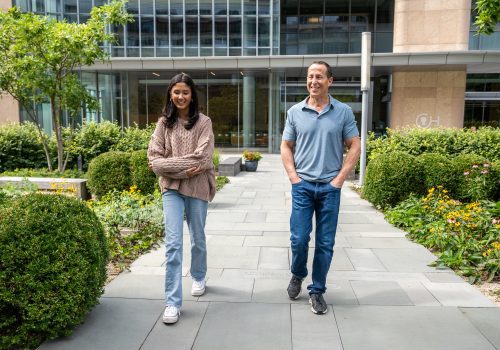Nine-year-old Layla knows way too much about cancer for her age. She can explain what a shunt does, what a port is for and she understands what’s going on when her mom, Autumn, talks with her doctors about what’s next in her treatment plan. Layla has been living with a brain tumor since she was 2 years old – she was diagnosed just before her third birthday. Her type of tumor is called brain stem glioma, a slow-growing cancer, but inoperable in Layla’s case because of where it’s located in her brain. Her medical history is too long to fit on the field trip permission forms she brings home from school – but for Layla, it’s always been this way.
When childhood cancer is chronic
The first two years of Layla’s treatment were punctuated with big, scary emergencies – in just those two years, she had nine surgeries, many that addressed spinal fluid flow issues that were impaired by her tumor and its growth. Every step was urgent, every development was life-threatening. Now, Layla is 9, and things are more in limbo. Every three months she goes in for scans, where doctors tell her that the tumor is growing, but too slowly to make any big decisions on next steps yet.

Layla during a hospital visit in 2016
She’s not cured, but she’s also not in active treatment right now. She’s surviving, but she’s also not quite in the “survivorship” phase. That’s been especially hard to cope with recently – Layla met many of her friends in the hospital, because they have cancer in common. But now they’re “graduating” treatment and leaving her behind.
“A lot of Layla’s friends had leukemia, so after about two or three years, we started getting invited to all these end-of-treatment parties. Layla saw her friends getting to ring the bell and get their ports removed,” Autumn said. “That triggered lots of questions in her like, ‘When do I get to be done, when do I get to have that?’ That was hard to watch. We had to come to terms with knowing that she’s different… even from the cancer friends, she’s still different.”
Read our blog: Tools in Your Self-Care Toolbox
Living in limbo
Autumn said after two years of treatment, she and Layla had to transition from talking about surviving cancer and treatments to talking about creating a life worth living amidst the uncertainty of cancer. They’ve worked hard in therapy to help her develop confidence in school. Some days, she is able to own her diagnosis, telling classmates about her shunt and reassuring them that she’s able to play. Other days, she carries the heavy weight of feeling like an outsider.

Layla in spring 2021
“It’s really hard for me to watch, but I’m so proud of how she does this every day,” Autumn said. “Even though it’s hard, this has helped uncover a side of her personality that is so special that could only have come from going through all this.”
Learn more: Why childhood cancers are considered “too rare” to get research funding
“We have time until we don’t.”
Autumn is grateful that Layla’s tumor is slow-growing, because it means they have more time for research to hopefully catch up to her cancer. For the past several years, they’ve been slowly working through the dwindling number of treatments available to her, painstakingly weighing the options, hoping to leave as many paths open as they can for as long as possible. But it’s not easy – every experimental treatment they try closes doors to other treatments. If you try one clinical trial, that might exclude you from participating in others.
What Layla needs is some kind of immunotherapy breakthrough, but to Autumn, that feels too far away. Why? Because researchers don’t have the funding they need to dig into cancers like Layla’s.
“I know how limited research funding is for pediatric cancers, and where does that funding often go? To the fast-growing tumors, because those are the kids who don’t have any time,” Autumn said. “Logically, I get that, because we’ve lost some of those kids in our own life. I’m grateful we have more time, but it’s so hard to know we’re at the bottom of the list. We have time until we don’t anymore.”
Learn more about promising progress in brain tumor research: The Road to a Clinical Trial for Childhood Brain Tumors
Autumn’s Cancer Family Essentials
A strong support system. Layla’s dad, Derek, is in the military, meaning their family had to move across the country mid-treatment because of his new assignment. The pandemic has made it especially difficult to create a new community. But they’ve worked hard to create the kind of support system they need to carry their family through the hard times – befriending their kids’ teachers, keeping in touch with family, joining and creating moms groups and lining up Layla’s appointments with other kids on a similar journey.
Therapy – lots of therapy. Cancer is a whole-family ordeal, so Autumn and all three of her kids have been in therapy at various times to heal from the trauma. Autumn says it has helped immensely with anxiety and depression she developed during treatment, and it helps her understand what Layla’s siblings are going through so she can validate them.
Gratitude and acceptance. Autumn says she and Layla work hard every day to find the good and be thankful for what they have. “We are grateful to the people this has brought into our lives. It’s forced us to find joy in life, because we have to make going through all this worth it.”
We can do more for kids like Layla.
Cancer treatments for kids like Layla often haven't improved in decades - but we believe we can do better by funding research. Your gift supports researchers searching for better, safer treatments for kids fighting cancer.



